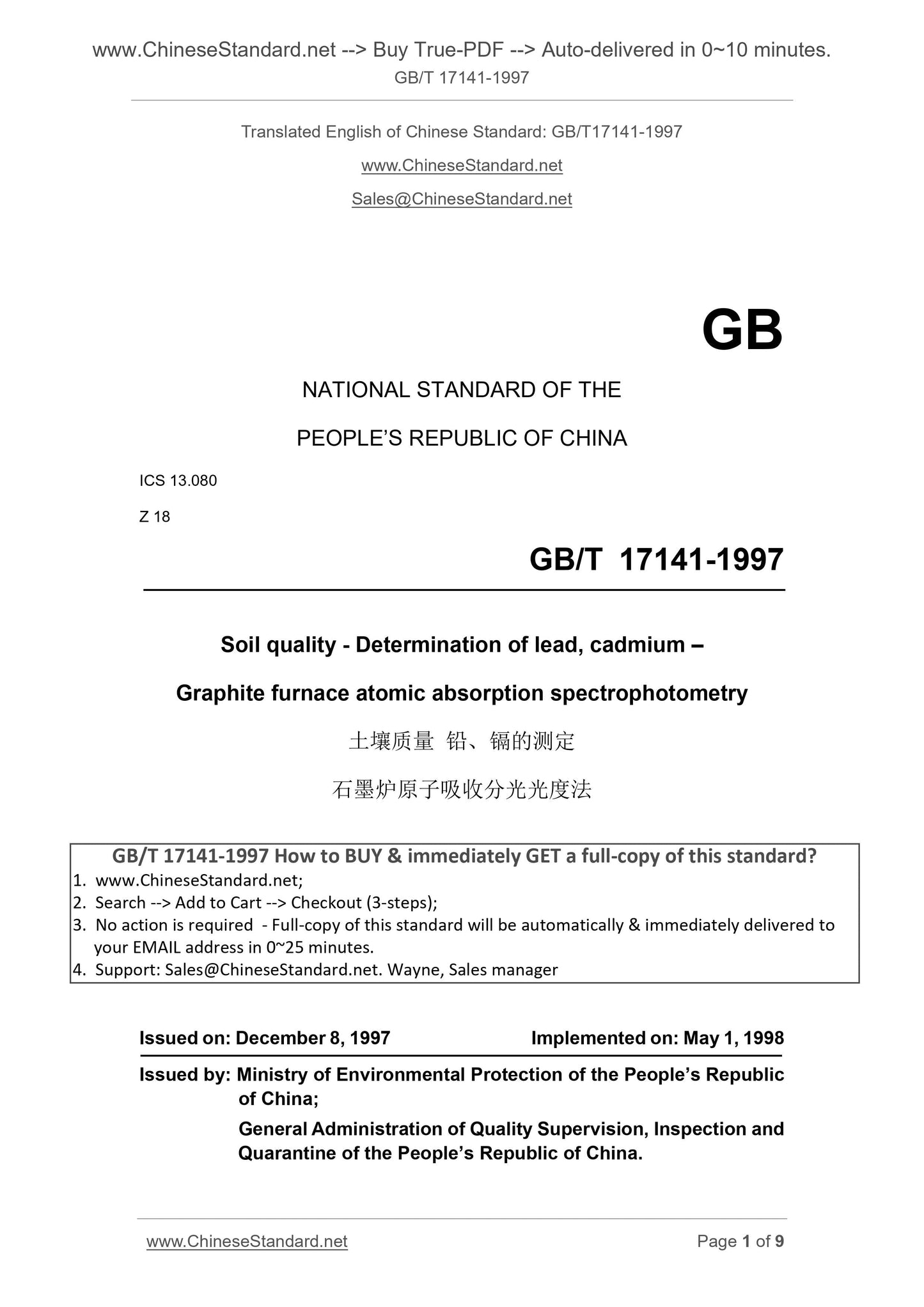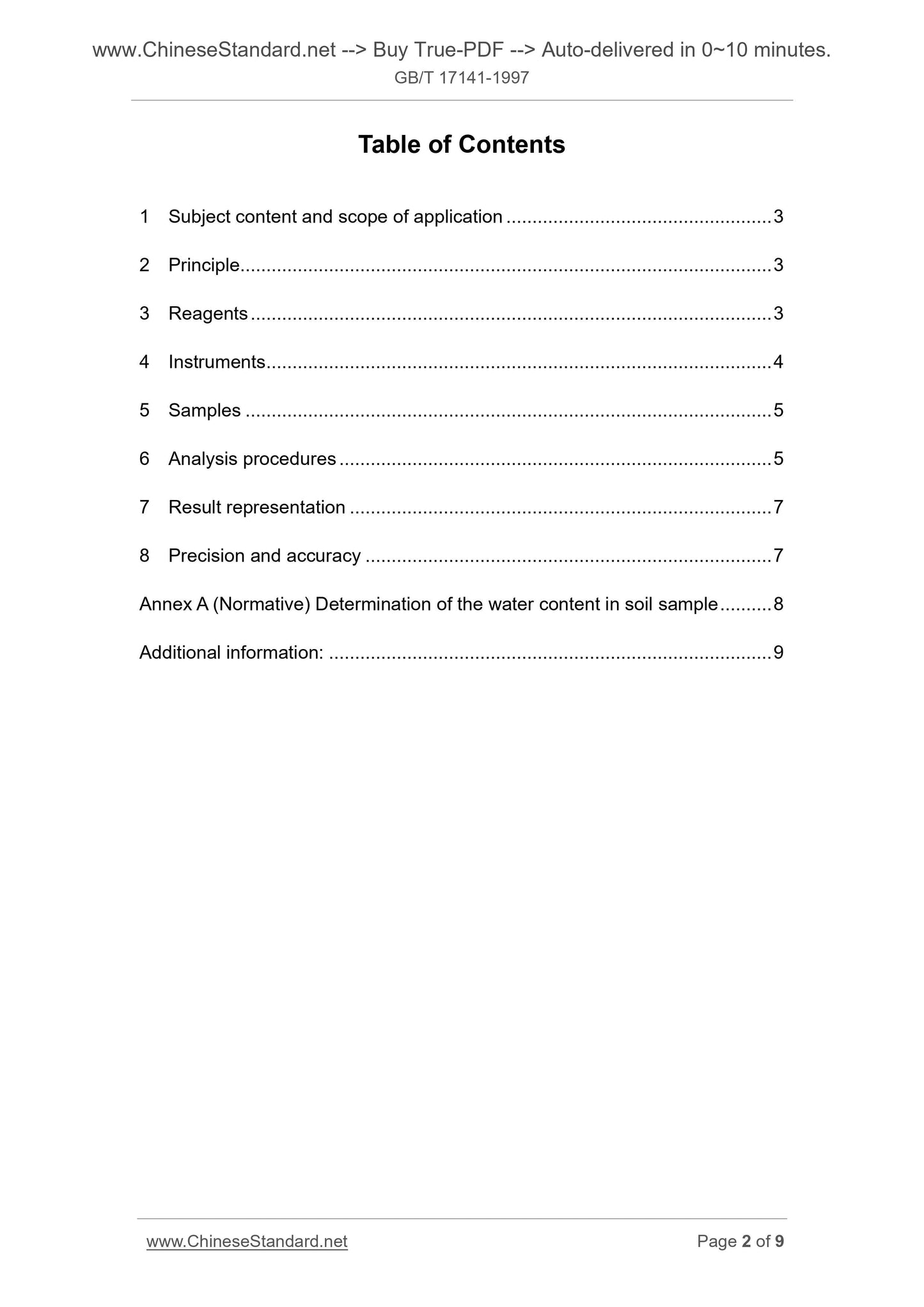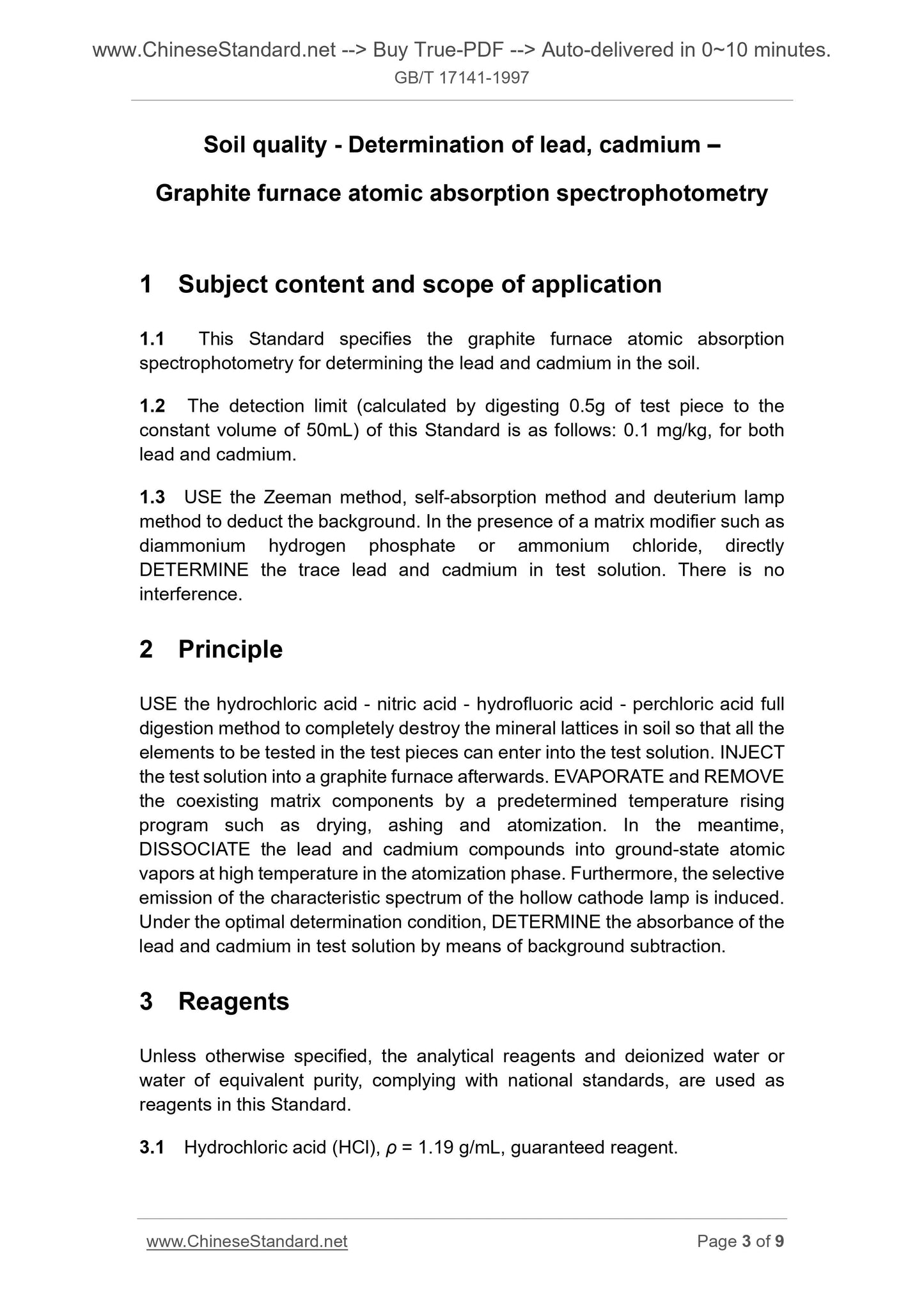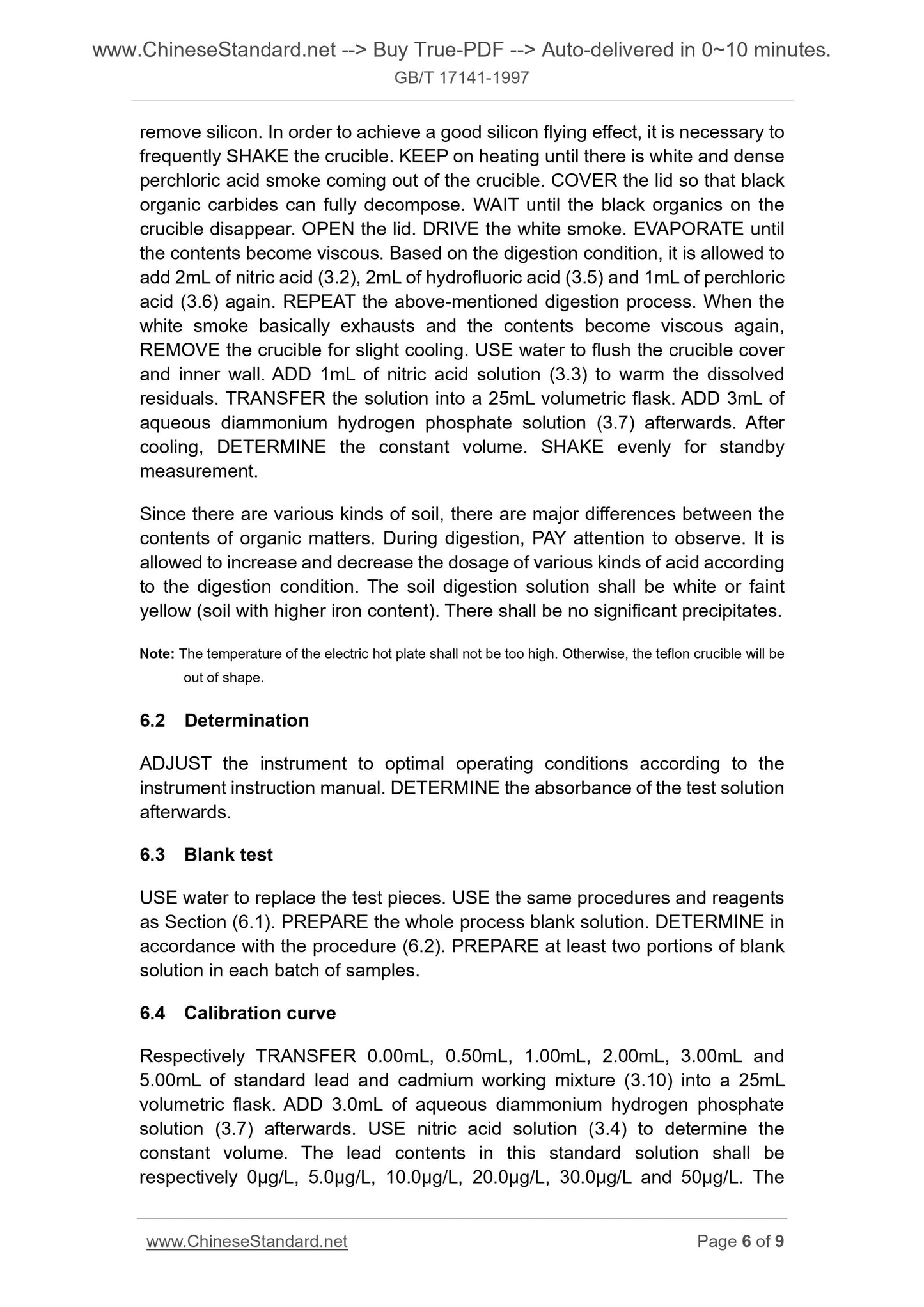1
/
of
4
www.ChineseStandard.us -- Field Test Asia Pte. Ltd.
GB/T 17141-1997 English PDF (GB/T17141-1997)
GB/T 17141-1997 English PDF (GB/T17141-1997)
Regular price
$80.00
Regular price
Sale price
$80.00
Unit price
/
per
Shipping calculated at checkout.
Couldn't load pickup availability
GB/T 17141-1997: Soil quality. Determination of lead, cadmium. Graphite furnace atomic absorption spectrophotometry
Delivery: 9 seconds. Download (and Email) true-PDF + Invoice.Get Quotation: Click GB/T 17141-1997 (Self-service in 1-minute)
Newer / historical versions: GB/T 17141-1997
Preview True-PDF
Scope
1.1 This Standard specifies the graphite furnace atomic absorptionspectrophotometry for determining the lead and cadmium in the soil.
1.2 The detection limit (calculated by digesting 0.5g of test piece to the
constant volume of 50mL) of this Standard is as follows. 0.1 mg/kg, for both
lead and cadmium.
1.3 USE the Zeeman method, self-absorption method and deuterium lamp
method to deduct the background. In the presence of a matrix modifier such as
diammonium hydrogen phosphate or ammonium chloride, directly
DETERMINE the trace lead and cadmium in test solution. There is no
interference.
Basic Data
| Standard ID | GB/T 17141-1997 (GB/T17141-1997) |
| Description (Translated English) | Soil quality. Determination of lead, cadmium. Graphite furnace atomic absorption spectrophotometry |
| Sector / Industry | National Standard (Recommended) |
| Classification of Chinese Standard | Z18 |
| Classification of International Standard | 13.08 |
| Word Count Estimation | 5,589 |
| Date of Issue | 12/8/1997 |
| Date of Implementation | 5/1/1998 |
| Summary | This standard specifies the determination of lead in soil, cadmium by graphite furnace atomic absorption spectrophotometry. The detection limit of the standard (by weighing 0. 5g sample digestion volume to 50ml calculated) as: Lead 0. 1mg/kg, cadmium 0. 01mg/kg. Zeeman method using self-absorption method and charged deuterium lamp background, and in the diammonium phosphate or ammonium chloride matrix modifiers exist, the direct determination of trace amounts of the test solution of lead, cadmium and no interference. |
Share







